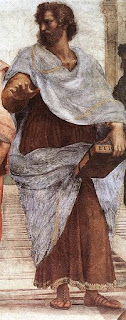The Roman day
was a daylight day, divided into twelve equal portions, so that an hour at
midsummer, in Rome
Midday was
therefore at the end of the sixth hour, after which little or no work was done.
Six hours’ solid work was regarded as something to aim for.
Breakfast was
not a large meal for most, and the same was true for lunch, so these did not
occupy much time.
The first two
hours of the day were the time of the “salutatio”, when middle-class Romans
would beg favours from upper-class Romans. This practice was originally of real
benefit, for example to give people direct access to legal advice, but under
the Empire it became a ritual of little purpose other than to cause annoyance
and embarrassment all round, and providing encouragement to sycophants and
hangers-on.
In rural areas,
most work was on the land. In the cities, it was trade and politics. We think
of Romans as living in the big towns and cities, mainly because of the ruins
that have survived, but far more people made their living from the land than in
the cities. There was, indeed, little manual work for the freeborn city dweller
to do, because there was an army of slaves to do it. Our knowledge of the daily
routine of Roman citizens is therefore that of the upper strata of society,
from whose ranks came the writers and poets whose documents have survived to
inform us about their lives.
Roman
children were educated at home by slaves when very young, and the routine of
going to school would not affect children younger than nine or ten, and would
not have involved girls at all. There were no schools in the modern sense,
teaching a multitude of subjects according to a timetable, but many different
masters teaching small groups in a single subject.
A boy of
twelve might therefore spend an hour with a master of Latin or Greek grammar,
before going on to a master of geometry, or of music. When older, at around
fifteen years of age, he would probably go to a school of rhetoric, to learn
public speaking. This was particularly important for sons of politicians who
hoped to be senators themselves one day.
The time
immediately after noon was given over to a siesta, except in winter, and then
the average Roman would exercise. The Greek influence after the 2nd
century BC led to an interest in such pursuits as running, wrestling, discus
and javelin throwing, boxing, gladiatorial-type contests and strenuous ball
games for the young, gentler ones for older people. Emperor Augustus instituted
the “Iuventus”, an early version of the Hitler Youth, in which the exercise was
very strenuous indeed.
The public
baths featured largely in the daily routine, and visits to the baths were
family affairs, although the facilities for men and women were usually in
separate chambers within the same building. The exercise spaces (“palaestrae”),
where the young people tended to congregate, were often next to the baths, and
use of the cold outdoor plunge pool (“piscina”) followed the athletic
exertions. A large city would have many different bath complexes, reflecting
the different social strata within a city. Rome
The family,
accompanied by its slaves if reasonably well-to-do, would therefore head for
the baths after the siesta, and then each family member would go his or her own
way, although mixed bathing was known to take place at the baths for the lower
classes. The cleansing routine involved the use of pools at every temperature
from hot (“caldarium”) to cold (“frigidarium”) and there were also sweating
rooms (“laconia
The baths,
especially those for the higher orders, were also places of culture and social
congress, and had the functions of modern art galleries, concert halls,
libraries and meeting rooms. They also played the role of the modern golf
course, in that a lot of business was conducted during the hours spent soaking,
relaxing and socialising.
So that
bathers could keep track of the time, a slave would shout out the hours as they
passed, and by the ninth hour most people would have left to go home for dinner
(“cena”), which was the only substantial meal of the day.
These were
family occasions, with maybe a few guests, and the orgies of popular
imagination were very rare occasions indulged in only by the ultra-rich.
Three-course meals were typical, with an educated slave reading aloud when
conversation flagged. After dinner, entertainment might be provided at a neighbour’s
house by professional dancers or acrobats.
Lighting a
house at night was inconvenient and expensive, so nightfall was soon followed
by bedtime.
© John
Welford







